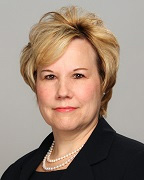
Ready and Responsive
There are many factors that make ASTM International a trusted and valued global standards organization, not the least of which is our rich and storied history. What began with standards supporting the U.S. railroad industry has evolved into an international organization supporting over 90 industry sectors that range from concrete and steel to consumer products and sustainability.
What has empowered ASTM’s expansion into new industries is the ability of our members and staff to adapt and meet the evolving needs of the world around us. This has propelled ASTM into a community where technical experts from around the globe can join — bolstered by our consensus-driven approach to standards development — and create high quality, market-relevant standards that help our world work better.
We’ve seen that adaptability in recent years as the world embraces emerging technologies, including additive manufacturing and exoskeletons. ASTM’s centers of excellence for additive manufacturing and exoskeletons are still in their infancy but have become integral in supporting research and development and filling standardization gaps.
Recently, ASTM expanded the scope of the driverless automatic guided industrial vehicles committee to support standards development across the entire advanced manufacturing spectrum. Now called the robotics, automation, and autonomous systems committee (F45), the group will address standards for automatic, automated, and autonomous vehicles; robotic arms and manipulators; and sensors used in these systems, for smart infrastructures, advanced manufacturing, logistics, and other automation.
In a similar fashion, we’ve seen committees incorporate emerging technologies into their work, as their industries have required it. We’re seeing this right now in our cannabis committee (D37), where members are developing cybersecurity standards to protect stakeholders throughout the supply chain.
It’s not solely with emerging technologies that we’ve see this adaptation over time. There’s always constant growth within our technical committees to ensure that as industries evolve, ASTM International standards development evolves with it.
In response to the growing need to address climate impacts and resilience among communities, ASTM’s environmental assessment, risk management, and corrective action committee (E50) launched a new subcommittee on climate and community. This group will focus on the development of standards to support key terminology; climate and community mapping; environmental, social, and governance disclosures related to climate and community; and more.
The examples highlighted on these pages represent just a few of the many ways in which ASTM adapts to meet the changing needs of the world around us. It’s what allows us to be ready and responsive to meet new challenges, and what brings together experts the world over to join our community and propel our standards work forward.
I look forward to seeing where it takes us next.
 SN Home
SN Home Archive
Archive Advertisers
Advertisers Masthead
Masthead RateCard
RateCard Subscribe
Subscribe Email Editor
Email Editor